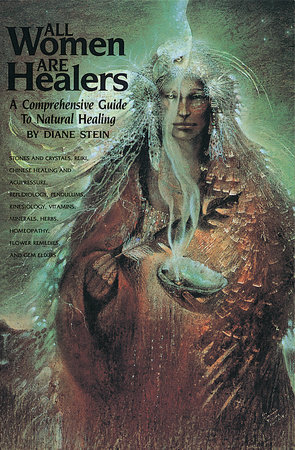An Introduction to the Goddess
The popular expression “if God were a woman” suggests that were it so, the world would be a very different place. History would agree. Matriarchal societies have flourished and female deities have been worshipped since the beginning of human civilization. Since then, the primal “divine ancestress” and the female principle have manifested in countless mythological and spiritual traditions in multiple forms, each with a special message and meaning for us to live by.
What is the true meaning of goddess? Who are the most powerful goddesses?
In mythology, a goddess is a female god. Spiritually, embracing the goddess within suggests you have qualities of beauty, power, love, and self-worth. These qualities are reflected in your demeanor, the way you act with others, and even the way you move. For thousands of years, people from around the world have called upon different goddesses as role models and powerful allies to address problems or attain desires in their lives.
- Kwan Yin is a Buddhist goddess who is a beacon for compassion.
- Mazu is a Chinese goddess of the sea invoked by sailors and others for her healing powers and ability to predict the weather.
- Bridget, a Celtic goddess of spring, is associated with healing, protection of the young, and creativity, especially the poetic arts.
- Aphrodite is the Greek goddess of love and beauty, famous and revered for her magnetic charm and personification of the power of desire.
- Al-Lat is a pre-Islamic goddess often called upon for protection against enemies, for vengeance against aggressors, and for favorable weather.
- Durga is a Hindu deity to call upon when you’re in trouble to empower your aspirations and inspire your inner leader.
- Kali is the most primal expression of nature in the Hindu pantheon. Depicted with many arms, surrounded by carnage, Kali is the goddess of death, but also embodies “boundless and existential freedom to be—without seeking permission” and can inspire inner strength and transformation.
- Shakti is the Hindu goddess who is viewed by many as the most powerful of all deities, above all gods and goddesses alike. Shakti (meaning “power” or “energy” in Sanskrit) is the primordial cosmic energy responsible for all creation, life, and death in the universe. Shakti is the dynamic feminine principle in the universe. She is worshipped on her own (Shaktism) or in the form of other Hindu deities including Durga, Kali, Lakshmi, and Parvati.
Who are the Greek goddesses? What are their Roman names?
The names of the ancient Greek and Roman gods are often used interchangeably, but there is a significant difference in how the Greeks and Romans conceived of their deities. The Greeks gods were individualistic and had personality traits not unlike humans. A thousand years later, the Roman gods were not seen as individuals—they were more associated with objects or actions.
In Greek mythology, there are a dozen major deities, known as the Twelve Olympians, and many minor gods. The six female Olympians (with their Roman names following) are:
- Hera (Juno): goddess of marriage
- Aphrodite (Venus): goddess of love
- Artemis (Diana): goddess of the hunt
- Athena (Minerva): goddess of wisdom
- Demeter (Ceres): goddess of fertility, the harvest, and agriculture
- Hestia (Vesta): goddess of the hearth
Selene (Luna) is the Greek goddess of the moon. Pre-dating the Olympian gods, Selene is often depicted crowned by a lunar crescent, driving her shining chariot across the night sky. The chariot is usually powered by winged steeds but sometimes by oxen, whose horns appear as her crescent.
Though she is the queen of all the Olympian gods, Hera is not the most powerful Greek goddess. As the wisest, renowned for her powers of reasoning and intelligence, Athena was the most popular and influential of all the Greek deities. The city of Athens is named for her.
What is goddess spirituality? What does it mean to worship a goddess?
Female divinities hold places of importance around the world, including in Native American, Asian, African, Middle Eastern, and European mythological traditions. Most Eastern religions still venerate female gods, and in the monotheistic faiths, vestiges of the goddess remain.
The goddess Sophia (the Greek word for “wisdom”) has been revered in many forms. She was the Dark Goddess of ancient Anatolia and appears in the Christian Gnostic tradition as the female twin of Jesus and in the Jewish Kabbalah as the female expression of God. Today she is St. Sophia in the Orthodox Christian tradition.
Many Yoruba goddesses, or “orisha,” were brought to the New World by the slave trade. Among the most powerful is Yemoja, a major water spirit, who is considered the mother of all orishas. The powers of Yemoja and the Divine Feminine of West African spiritual traditions helped shape the development of the Santeria, Haitian Vodou, and New Orleans Voodoo religious beliefs.
Since earliest times, the Divine Feminine has been recognized as the ultimate source of power. In ancient Greek mythology, she was known as Gaia, the mother of all creation. Incan cultures worshiped the Earth goddess Pachamama. These goddesses represented a holistic relationship between humans and the planet as an interdependent, self-regulating, life-giving ecological system.
The lunar cycle has always been strongly linked to women’s menstrual cycles and moon deities are often, though not always, female. The pantheon of global moon goddesses include Ishtar (Babylonian), Xochiquetzal (Aztec), Rhiannon (Celtic), and Isis (Egyptian). They are symbols of fertility, transformation, and the phases of life.
The evolution of the feminine divine from one Great Goddess to many, and from Neolithic Old Europe to contemporary goddess-worshiping Neo-Pagan and Wiccan movements continues. Beyond religion, archetypal psychology uses stories of goddesses and gods and other myths to represent universal human qualities; stories transcend the individual and connect us all.
You Might Also Like Our Content on These Topics: Sacred Feminine, Archetypes, Mythology, Wicca






 When we bring our attention back to discovering who we are on the inside—not who we wish we were or who we think we should be—we begin a sacred path of transformation toward our innate, authentic, embodied power. This is the path of the Warrior Goddess.
When we bring our attention back to discovering who we are on the inside—not who we wish we were or who we think we should be—we begin a sacred path of transformation toward our innate, authentic, embodied power. This is the path of the Warrior Goddess.




